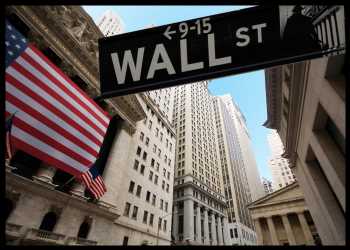
Dow Seeing Further Upside But Nasdaq Pulls Back Sharply
Following the rally seen in the previous session, the major U.S. stock indexes have moved in opposite directions in morning trading on Thursday. While the Dow has seen further upside, the tech-heavy Nasdaq has shown a sharp pullback.
In recent trading, the Nasdaq has fallen to new low for the session, slumping 156.17 points or 1.1 percent at 13,487.42. The S&P 500 is also down 19.13 points or 0.4 percent at 4,427.46, while the narrower Dow is up 138.14 points or 0.4 percent at 34,702.73.
The continued advance by the Dow is partly due to a strong gain by shares of Nike (NKE), with the athletic apparel and footwear giant jumping by 4.4 percent.
Notable gains by Caterpillar (CAT), IBM Corp. (IBM) and Dow Inc. (DOW) are also contributing the upward move by the blue chip index.
Meanwhile, weakness among semiconductor stocks is weighing on the Nasdaq, with the Philadelphia Semiconductor Index falling by 1.5 percent.
The mixed performance on Wall Street also comes as traders digest a slew of earnings news and U.S. economic data.
Shares of Goldman Sachs (GS), Morgan Stanley (MS) and Citigroup (C) are moving higher after the financial giants all reported better than expected quarterly earnings.
Social media giant Twitter (TWTR) has also moved to the upside after Tesla (TSLA) CEO Elon Musk said he offered to take the company profit for $54.20 per share in cash or approximately $43 billion.
On the other hand, shares of Wells Fargo (WFC) moving lower after the bank reported first quarter earnings that beat analyst estimates but weaker than expected revenues.
Traders are also reacting to some key U.S. economic data, including a report from the Commerce Department showing U.S. retail sales increased in March amid a spike in sales by gas stations.
The report showed retail sales rose by 0.5 percent in March after climbing by an upwardly revised 0.8 percent in February.
Economists had expected retail sales to increase by 0.6 percent compared to the 0.3 percent uptick originally reported for the previous month.
Excluding a pullback in sales by motor vehicle and parts dealers, retail sales jumped by 1.1 percent in March after rising by 0.6 percent in February. Ex-auto sales were expected to increase by 1.0 percent.
A separate report released by the Labor Department showed first-time claims for U.S. unemployment benefits increased by more than expected in the week ended April 9th.
The Labor Department said initial jobless claims rose to 185,000, an increase of 18,000 from the previous week’s revised level of 167,000.
Economists had expected initial jobless claims to edge up to 171,000 from the 166,000 originally reported for the previous week.
The Labor Department also released a report showing U.S. import prices surged by more than expected in the month of March, as prices for fuel imports continued to skyrocket.
Meanwhile, preliminary data released by the University of Michigan unexpectedly showed a substantial improvement in U.S. consumer sentiment in the month of April.
The report showed the consumer sentiment index spiked to 65.7 in April from 59.4 in March. The sharp increase surprised economists, who had expected the index to edge down to 59.0.
The unexpected jump in consumer sentiment reflected an improvement in consumer expectations, with the expectations index surging to 64.1 in April from 54.3 in Mach.
In overseas trading, stock markets across the Asia-Pacific region moved mostly higher during trading on Thursday. Japan’s Nikkei 225 Index and China’s Shanghai Composite Index both jumped by 1.2 percent, while Hong Kong’s Hang Seng Index climbed by 0.7 percent.
The major European markets have also moved to the upside on the day. While the French CAC 40 Index has advanced by 0.9 percent, the German DAX Index is up by 0.6 percent and the U.K.’s FTSE 100 Index is up by 0.4 percent.
In the bond market, treasuries have pulled back sharply after regaining ground over the two previous sessions. Subsequently, the yield on the benchmark ten-year note, which moves opposite of its price, is up by 9.3 basis points at 2.780 percent.
Source: Read Full Article